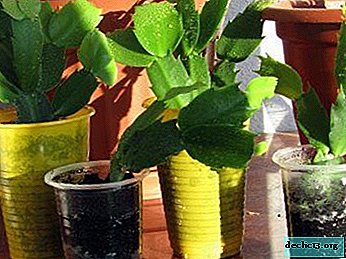Astilba in the design of the infield
Any plot involves at least a small number of plants. Most owners of household territories prefer to decorate most of them with various greens, flowers, or set up entire gardens. Astilba has become a very popular ornamental plant for landscaping.

Specificity and features of this species
Astilba is a highly ornamental crop. You can use it even in wetlands, so landscape designers are increasingly using it for their projects.
The native countries of this unusual garden decoration are China and Japan. A few more varieties can be found in Russia, the USA and Korea. At the beginning of the twentieth century, designers began to use astilbe for landscape design.


Fluffy panicles of which inflorescences are made give the plant its original look. In the native environment, there are about thirty species. About ten of them are used for decoration. In addition, selection specialists are breeding new varieties using existing ones. To design the garden design are used:
- dwarf;
- undersized;
- medium;
- tall species.
In addition to this trait, plants are divided into groups according to flowering time. Early varieties bloom in June. Late-flowering blossoms at the end of the season. There are hybrids with an average flowering period. They bloom in the middle of summer.


The rhizome of the flower is very powerful. It is divided into a large number of roots that go deep into the soil. The plant even without inflorescences looks attractive all season. This is facilitated by the original dissection of leaves and reddish cuttings. Flowering of such a plant looks very beautiful. Consisting of small flowers, inflorescences are usually painted in shades of red or remain white. A variety of colors appeared with the beginning of the breeding of new varieties by breeders.



This plant is well suited for the design of a garden or garden, as it does not require an annual transplant. The root of the plant is able to tolerate winter under the snow. And its upper part dies every year and grows back in season. Among the varieties that are good to use for landscape design, you can name:
- Chinese astilbe (Astilbe chinensis);
- Astilbe Thunberg (Astilbe thunbergii);
- Astilbe Japanese (Astilbe japonica) and others.


Planting and plant care
The best place to plant astilba on the site is a place in partial shade, saturated with humus and quite moist. The main aspect of choosing such a place should be the illumination and the possibility of effective watering of plants. If there is no such place on the site, then you can plant a flower in the sun. In this case, you should always monitor for sufficient moisture in the soil under the plant. The result of this arrangement will be bright lush flowering, but for much less time.


A useful property of astilbe is the ability to drown the growth of weeds with its powerful root. Thus, the place around the flower does not need weeding. In addition to this, even dried inflorescences will be a wonderful decoration of the garden, because after flowering they do not fall, but are stored on the bush.
Some efforts will have to be made, preparing the plant for winter. To preserve the bushes, they must be well mulched. This is necessary, despite the relative frost resistance of the astilbe. To preserve young bushes from frost, it is enough to cover them with fir spruce branches. You can also use special material created specifically for these purposes.
One bush can be used for up to five years in one place. The still unbroken root can then be divided into several parts and planted again in another place. The process of reproduction can also take place by seed. In early spring, seeds of a plant are sown under a film and in two weeks the first shoots will appear. In late spring, they can be transplanted into the ground for further growth.

Combination with other decorative elements.
Many plants get along well with astilbe. For a harmonious look, neighboring plants should have a vertical habit and lanceolate leaves. Looks good combination with large leaves. Among the suitable plants are:
- irises;
- Rogers
- daylilies;
- cuffs;
- hosts
- Badges;
- ferns;
- Anemones
- bells;
- aquilegia.
For the spring period, when astelbe has not yet appeared leaves, the void can be filled with bulbous crops. It can be scylls, hazel grouse, tulips, daffodils and others.



Ornamental shrubs are also in perfect harmony with the astilbe bushes. Such combinations look good on alpine hills, in mixborders and near various water bodies.

Large smooth leaves of other plants will create the necessary contrast with the leaves of astilbe. The unusual shape and color variety will allow you to create unusual combinations for the decorative design of the site. Due to the fact that the plant can grow from 8 cm to 2 m up, you can create multi-level compositions.
Astilboy can design areas decorated in any style. She will fit into a Japanese garden. Separate bushes stand out against the background of small conifers, bearing a decorative function. From this plant, you can create dividing partitions and draw borders with them. Flower beds can also favorably emphasize the originality of astilbe in landscape design. Best plant fits into the landscape of a regular style.



An important factor that makes such a flower popular among designers is its versatility and unpretentiousness. Some varieties retain their wilted inflorescences for a long time. They can become an unusual decoration for the garden in the cold season. Easy planting and breeding are also an advantage. And resistance to parasites and diseases will allow you not to spend a lot of time on additional operations to care for the plant.

















